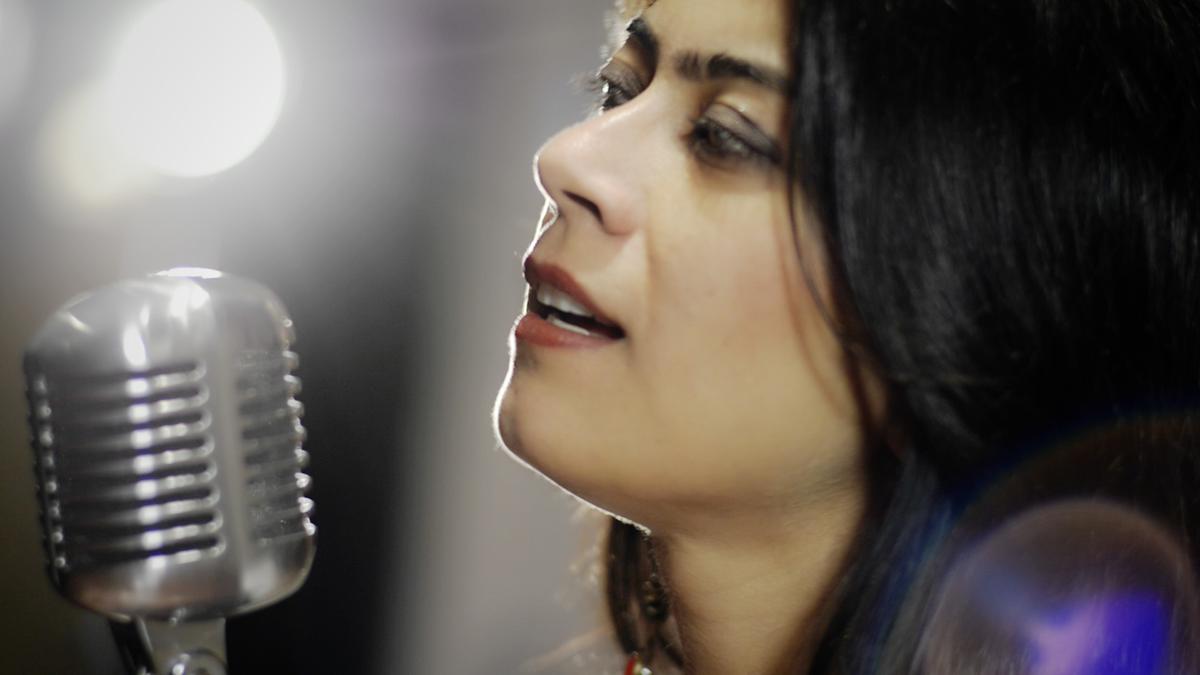Celebrated for her fusion of Sufi/Indian folk and contemporary music, singer-songwriter Devika recently joined forces with Grammy-nominated composer and producer Michael Brook for their new collaboration ‘Wisteria’. The poignant Punjabi ballad, with its universal themes of unrequited love and restlessness, blends Devika’s emotive vocal melodies with Michael’s timeless production.
The collaboration started with Devika listening to a few short guitar sketches from Michael’s library. The one that spoke to her was called ‘Wisty’ — it inspired her to create a melody and lyric. “The song is a heartfelt expression of love, longing and restlessness. It was a reminder of past bittersweet moments,” says Devika.
In her formative years, Devika was obsessed with Night Song, a collaboration between Michael and Ustad Nusrat Fateh Ali Khan. Nominated for the Best Global Music Performance Grammy Award, it was the first album to blend the sounds of traditional Eastern folk singing with new-age Western electronica. Needless to say, she was thrilled when she got the opportunity to meet Michael in his home studio and start working with him.

Singer Devika
| Photo Credit:
Special Arrangement
Itwas a fulfilling, interconnected song writing process. Devika would record vocals and send them over to Michael. Her vocals inspired additional compositional development from him, such as adding the violin, guitar and other instruments. Those additions would shape her next iteration. “It was an open and exploratory process — we weren’t trying to restrict ourselves to any specific formula, format or genre; we were just creating something that was meaningful and impactful for both,” she recalls.
The collaboration resulted in a soulful Punjabi ballad that blends traditional roots with a contemporary feel. “It is full of surprises and has unique elements – vocals that transition varying levels of intensity, and a rich palette of music – nylon string guitar, 12-string guitar, bass, cello, violin and string instruments,” adds Devika.
Trained in Hindustani classical music, Devika has been collaborating across genres, including with renowned artistes such as Bohemia, Amaan Ali Bangash, Ayaan Ali Bangash, and Mike Klooster of Smash Mouth. Her tracks ‘Jab se piya’ and ‘Mast qalandar’”, were submitted for Best Global Music Performance category at the Grammys. The San Francisco-based, New Delhi-born artiste’s voice also features on Apple’s iMovie App’s Bollywood Trailer.
Michael has previously collaborated with artistes such as Brian Eno, The Edge, Nusrat Fateh Ali Khan, Youssou N’Dour, Hukwe Zawose and The Pogues. His recent production of Chain of Light, consisting of rediscovered recordings from Nusrat Fateh Ali Khan, was The Guardian’s World Album of The Year for 2024. He has also collaborated on film scores for Into the Wild, The Fighter, Brooklyn and Perks of Being a Wallflower.
Michael was first exposed to Indian music through little snippets in songs by The Beatles. “Both the sounds of the instruments and the element of expression in the transitions between notes, such as gliding, deeply appealed to me. I don’t know why,” says Michael. Later, he began trying to add some of those expressive elements to his guitar playing, but was limited by the fact that a guitar doesn’t sustain that long. In 1972, he saw musician Bill Nelson play with an EBow that electronically bowed the strings, giving more sustain, which allowed for more focus on the transitions between notes. When Michael ordered one, his order got lost. He decided to create something along similar lines. “The device I came up with, the Infinite Guitar, worked out very well for me and became an integral part of my music,” he elaborates. The Infinite Guitar has also been immortalised in U2’s ‘With or Without You’.
Devika has some exciting collaborations and concerts in the works. Michael has some concerts for the 40th anniversary of his first solo album, Hybrid. He is also working on music for a new album. “I also hope that Devika and I can do another collaboration, as this one turned out so well, and the process was enjoyable,” he concludes.
Published – April 23, 2025 06:30 pm IST
